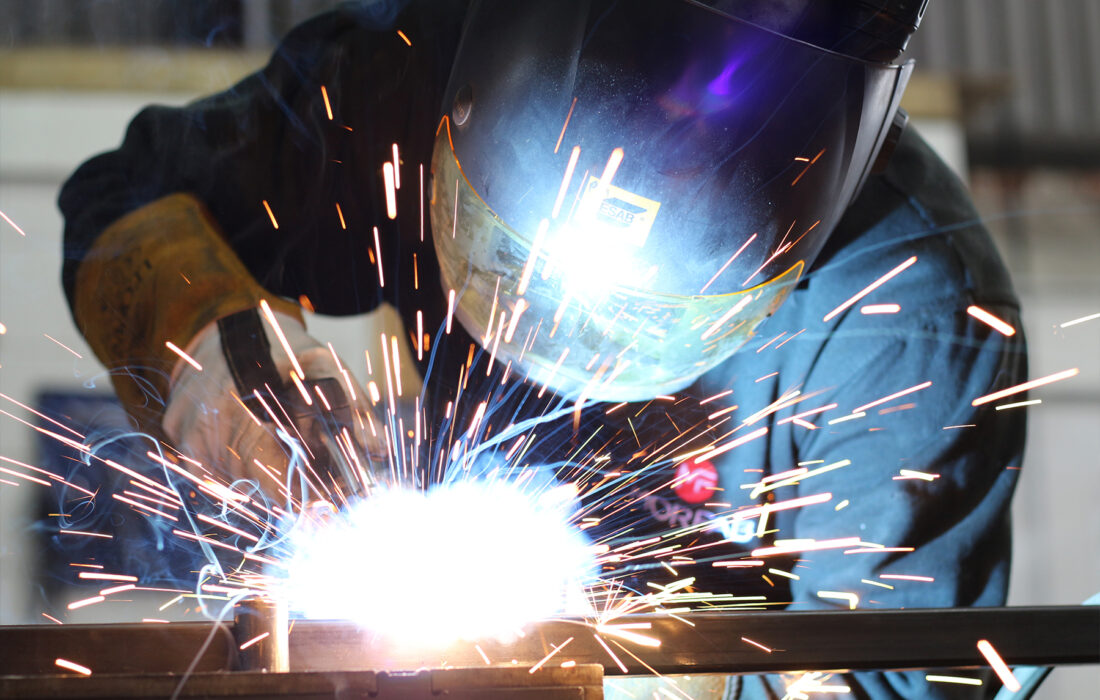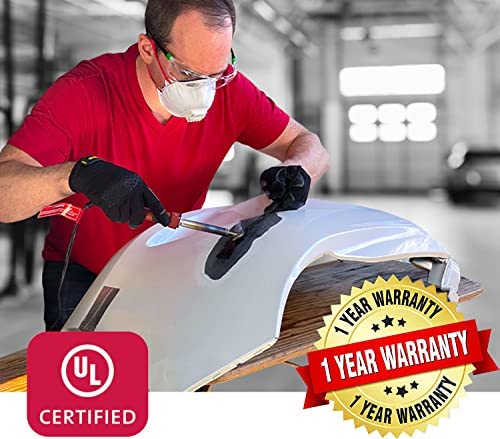Typical Welding Fixing Issues and Just How to Address Them Effectively
Welding repair work usually come across a range of problems that can jeopardize the stability of the final item. Typical problems consist of poor infiltration, porosity, and misalignment, amongst others. Each problem offers unique obstacles that need details methods for resolution. Comprehending these problems is necessary for welders aiming to enhance their skills and end results. This conversation will certainly explore these usual welding repair service issues and reliable techniques to address them.
Inadequate Infiltration
Poor penetration takes place when the weld metal stops working to fully fuse with the base product, leading to weak joints and prospective structural failures. This issue frequently comes from inadequate warmth input, wrong electrode angle, or improper welding rate. Welders might come across inadequate infiltration due to a mistake of the required specifications for a particular product thickness or kind. Additionally, contamination on the base product's surface area can hinder reliable bonding, aggravating the issue. To deal with insufficient penetration, welders need to assure ideal settings on their tools and maintain a tidy work surface. Regular evaluation of welds is suggested to identify any kind of deficiencies early, enabling timely improvements and the prevention of compromised structural integrity in welded settings up.
Porosity
Porosity is an usual defect in welded joints that materializes as small gas bubbles entraped within the weld metal. This problem can jeopardize the honesty of the weld, resulting in reduced toughness and prospective failure under stress. Fabrication. Porosity commonly arises from contamination, moisture, or incorrect welding strategies, which enable gases to run away right into the liquified weld swimming pool. To resolve porosity, welders should ensure appropriate surface prep work, maintain a clean workplace, and use appropriate welding criteria. In addition, choosing the appropriate filler product and securing gas can minimize gas entrapment. Normal assessment and testing of welds can aid recognize porosity early, ensuring timely restorative actions are taken, consequently preserving the high quality and dependability of the bonded framework
Misalignment
Misalignment in welding can occur from various elements, consisting of improper arrangement and thermal development. Understanding the root triggers is essential for effective resolution. Several adjustment strategies are offered to straighten components and ensure architectural honesty.
Sources of Imbalance
Welding misalignment often comes from a range of underlying concerns that can endanger architectural honesty. One key reason is improper fit-up of components prior to welding, which can lead to spaces and unequal surfaces. Variations in thermal growth during the welding procedure can additionally cause distortion, specifically if the materials being joined have different coefficients of growth. In addition, poor fixturing and securing may fall short to hold components securely in position, bring about activity throughout welding. Inadequately conserved devices, consisting of welding devices and tools, may introduce variances in the weld bead, further adding to misalignment. Operator error, stemming from not enough training or experience, can additionally play a substantial function in developing misaligned welds.

Improvement Methods Offered
Resolving misalignment properly needs a combination of restorative methods customized to the particular concerns available. One usual approach is the usage of jigs or components to hold components in the appropriate position during welding, making certain constant positioning. Additionally, pre-heating the materials can aid decrease distortion and boost fit-up. For considerable imbalance, mechanical adjustment methods, such as making use of hydraulic jacks or clamps, can be employed to remedy the setting before welding. Post-weld warm treatment may additionally be required to relieve stresses caused by misalignment. Finally, careful evaluation and modification during the setup stage can avoid misalignment concerns from becoming significant problems, advertising a smoother welding process and improving total architectural stability.
Distortion
Distortion is a typical obstacle in welding that can emerge from various elements, consisting of uneven heating and cooling. Recognizing the reasons for distortion is important for executing effective prevention techniques. Resolving this concern not just enhances architectural stability yet additionally enhances the total quality of the weld.
Root causes of Distortion
When based on the intense warmth of welding, materials usually go through adjustments that can result in distortion. This sensation mainly develops from thermal expansion and tightening during the welding process. As the weld location warms up, the product increases; upon air conditioning, it gets, which can create internal anxieties. Additionally, irregular heating across a work surface can worsen these stress and anxieties, leading to bending or flexing. The type of material additionally plays a considerable role; metals with varying thermal conductivity and coefficients of growth might respond differently, causing unpredictable distortions. Inadequate joint here are the findings design and insufficient fixturing can contribute to imbalance throughout welding, enhancing the likelihood of distortion. Understanding these reasons is essential for effective welding repair work and avoidance strategies.
Prevention Techniques
Reliable prevention techniques for distortion during welding focus on controlling warm input and making certain proper joint style. Preserving a constant heat input aids to reduce thermal expansion and contraction, which can bring about distortion. Using strategies such as preheating the work surface can additionally reduce the temperature gradient, promoting consistent home heating. Furthermore, selecting appropriate joint styles, such as T-joints or lap joints, can boost security and lower stress concentrations. Applying proper fixturing to protect the work surfaces in area even more help in maintaining placement during the welding process. Lastly, staggered welding series can distribute warmth more equally, stopping localized distortion. By applying these techniques, welders can significantly reduce the chance of distortion and enhance the general quality of their welds.
Splitting
Breaking is a common concern encountered in welding repair work, typically arising from different aspects such as improper cooling rates, product selection, or insufficient joint preparation. The event of splits can greatly jeopardize the honesty of the weld, bring about possible failures during procedure. To resolve this issue, welders need to initially assess the origin, guaranteeing that products are suitable and appropriately picked for the specific application. Additionally, regulating the air conditioning rate throughout the welding process is vital; fast cooling can induce anxiety and lead to splitting. Proper joint design and preparation likewise contribute to decreasing the risk. Implementing these techniques can enhance weld top quality and sturdiness, eventually decreasing the possibility of fracturing in finished weldments.

Insufficient Blend
A considerable issue in welding fixings is insufficient combination, which takes place when the weld steel does not appropriately bond with the base material or previous weld passes - Montana Mobile Welding and Repair. This flaw can lead to weak points in the joint, potentially endangering the honesty of the bonded structure. Variables contributing to insufficient fusion include insufficient warmth input, inappropriate welding strategy, and contamination of the surface areas being signed up with. To address this problem efficiently, welders ought to ensure proper pre-weld cleansing and surface preparation, in addition to adjust their welding criteria to accomplish adequate infiltration and combination. Normal assessment site throughout the welding procedure can likewise aid recognize incomplete fusion early, enabling prompt restorative measures to enhance the total quality of the weld
Overheating
While welding fixings can enhance structural integrity, overheating provides a substantial obstacle that can cause material deterioration. Excessive heat throughout welding can alter the mechanical residential or commercial properties of steels, causing reduced stamina, enhanced brittleness, and bending. This phenomenon is particularly important in high-stress applications where structural integrity is extremely important. Identifying overheating can include visual examinations for discoloration or distortion, as well as checking temperature during the welding procedure. To reduce the threats related to getting too hot, welders need to use suitable techniques, such as regulating warmth input, readjusting traveling rate, and using ideal filler materials. Additionally, executing pre- and post-weld heat therapies can aid restore material homes and improve the general quality of the repair service, making sure lasting performance and safety and security.
Regularly Asked Inquiries
What Are the Typical Indications of a Welding Problem?

Just How Can I Check My Welds for Top quality?
To check welds for quality, one can utilize aesthetic examinations, ultrasonic screening, and radiographic methods. Each method guarantees structural integrity, recognizes problems, and verifies adherence to specified requirements, inevitably boosting the reliability of the welded joints.
What Safety and security Preventative Measures Should I Take While Welding?
When welding, one need to prioritize safety and security by wearing ideal individual safety devices, guaranteeing correct air flow, securing flammable materials away, preserving a tidy office, and understanding surroundings to avoid injuries and mishaps.
Can I Repair a Weld Without Redesigning the Entire Joint?
Fixing a weld without remodeling the whole poly welding joint is possible, depending upon the damage (Belgrade Fabrication). Techniques such as grinding, including filler product, or making use of a welding process can effectively deal with specific imperfections while protecting the surrounding structure
What Tools Are Vital for Efficient Welding Services?
Necessary tools for efficient welding fixings consist of a welding machine, cord brush, mill, protective gear, clamps, and filler materials. Each tool plays a vital role in making sure high quality and security throughout the repair service procedure. Porosity commonly occurs from contamination, dampness, or inappropriate welding techniques, which permit gases to get away into the molten weld pool. Improperly maintained equipment, including welding devices and devices, may introduce variances in the weld grain, additional contributing to imbalance. When subjected to the intense warm of welding, products usually undertake changes that can lead to distortion. Cracking is an usual problem encountered in welding fixings, often resulting from numerous variables such as incorrect cooling rates, product choice, or inadequate joint prep work. A substantial issue in welding repair services is insufficient combination, which takes place when the weld steel does not properly bond with the base product or previous weld passes.